More than 350 candidates are to vie for 73 directly elected seats in the legislative elections on Saturday next week, the Central Election Commission announced yesterday.
A total of 354 legislative district candidates have registered to compete in the nation’s 73 electoral districts, a number that is more than 30 percent higher than the 269 candidates who competed in the 2012 elections.
Several new parties have also nominated candidates to run in the legislative elections, including the New Power Party, the Republican Party, and the Faith and Hope League.
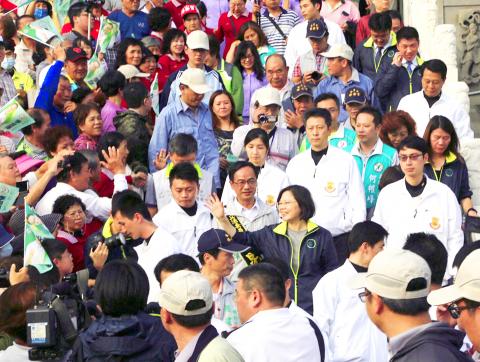
Photo: CNA
Many of the parties were formed last year out of disappointment with the performances of larger parties.
The Legislative Yuan has a total of 113 seats. In addition to the 73 legislative seats up for election in “first-past-the-post” campaigns, there are six seats reserved for Aboriginal candidates and the remaining 34 seats are for legislator-at-large candidates.
There are 23 Aboriginal candidates competing for the six seats.
The legislator-at-large seats are to be allocated in proportion to the total number of votes a party gets, but it must receive at least 5 percent of the vote to qualify for a seat.
A total of 18 political parties are competing for legislator-at-large seats, including the Chinese Nationalist Party (KMT), the Democratic Progressive Party (DPP), the Taiwan Solidarity Union (TSU), the People First Party (PFP) and the Non-Partisan Solidarity Union — all of which are now represented in the legislature.
In 2012, only 11 parties nominated candidates for legislator-at-large seats.
Because of the large increase in the number of participating parties, the size of the ballot paper to be used in the vote has increased to 73cm long and 15cm wide.
In the 2012 legislative elections, the KMT won 64 seats and the DPP garnered 40 seats. The PFP and TSU each won three seats, while the Non-Partisan Solidarity Union won two and the remaining seat went to an independent.
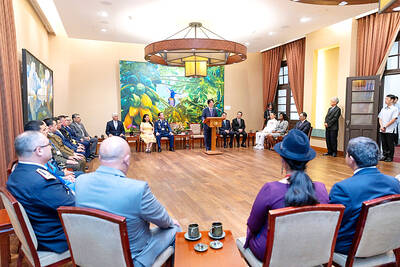
Costa Rica sent a group of intelligence officials to Taiwan for a short-term training program, the first time the Central American country has done so since the countries ended official diplomatic relations in 2007, a Costa Rican media outlet reported last week. Five officials from the Costa Rican Directorate of Intelligence and Security last month spent 23 days in Taipei undergoing a series of training sessions focused on national security, La Nacion reported on Friday, quoting unnamed sources. The Costa Rican government has not confirmed the report. The Chinese embassy in Costa Rica protested the news, saying in a statement issued the same
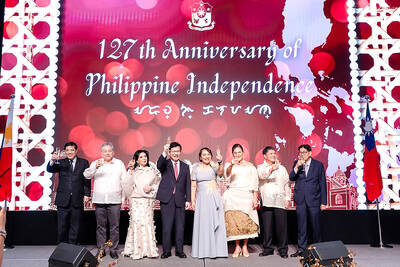
Taiwan is to extend its visa-waiver program for Philippine passport holders for another year, starting on Aug. 1, Minister of Foreign Affairs Lin Chia-lung (林佳龍) said on Friday. Lin made the announcement during a reception in Taipei marking the 127th anniversary of Philippine independence and the 50th anniversary of the establishment of the Manila Economic and Cultural Office (MECO) in Taiwan, the Ministry of Foreign Affairs said. The decision reflected Taiwan’s commitment to deepening exchanges with the Philippines, the statement cited Lin as saying, adding that it was a key partner under the New Southbound Policy launched in 2016. Lin also expressed hope
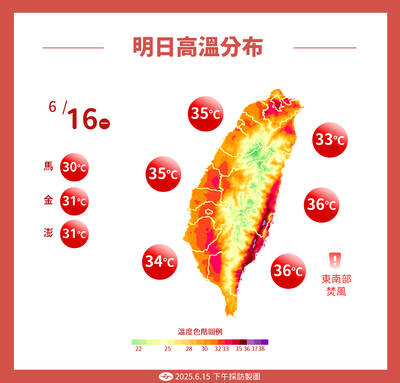
Temperatures in New Taipei City’s Sindian District (新店) climbed past 37°C yesterday, as the Central Weather Administration (CWA) issued heat alerts for 16 municipalities, warning the public of intense heat expected across Taiwan. The hottest location in Taiwan was in Sindian, where the mercury reached 37.5°C at about 2pm, according to CWA data. Taipei’s Shilin District (士林) recorded a temperature of 37.4°C at noon, Taitung County’s Jinfeng Township (金峰) at 12:50 pm logged a temperature of 37.4°C and Miaoli County’s Toufen Township (頭份) reached 36.7°C at 11:40am, the CWA said. The weather agency yesterday issued a yellow level information notice for Taipei, New
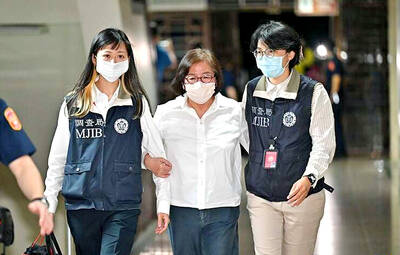
CASE: Prosecutors have requested heavy sentences, citing a lack of remorse and the defendants’ role in ‘undermining the country’s democratic foundations’ Five people affiliated with the Chinese Nationalist Party (KMT), including senior staff from the party’s Taipei branch, were indicted yesterday for allegedly forging thousands of signatures to recall two Democratic Progressive Party (DPP) lawmakers. Those indicted include KMT Taipei chapter director Huang Lu Chin-ru (黃呂錦茹), secretary-general Chu Wen-ching (初文卿) and secretary Yao Fu-wen (姚富文), the Taipei District Prosecutors’ Office said in a news release. Prosecutors said the three were responsible for fabricating 5,211 signature forms — 2,537 related to the recall of DPP Legislator Wu Pei-yi (吳沛憶) and 2,674 for DPP Legislator Rosalia Wu (吳思瑤) — with forged entries accounting for